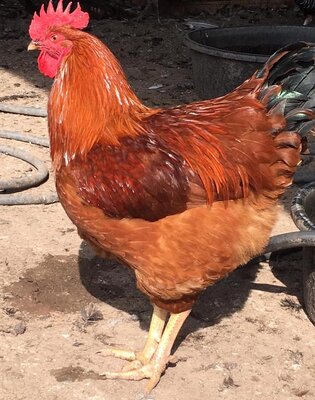I posted to the breed Yahoo group but haven't gotten much feedback and you guys are always so great at answering questions.
What is the difference between the American (or other) bloodlines and the German bloodlines in the New Hampshire breed? Are they bigger/smaller, broader/leaner... what? I see them being advertised specifically when they are German, so I am guessing there is something a bit different.
Thanks,
What is the difference between the American (or other) bloodlines and the German bloodlines in the New Hampshire breed? Are they bigger/smaller, broader/leaner... what? I see them being advertised specifically when they are German, so I am guessing there is something a bit different.
Thanks,








